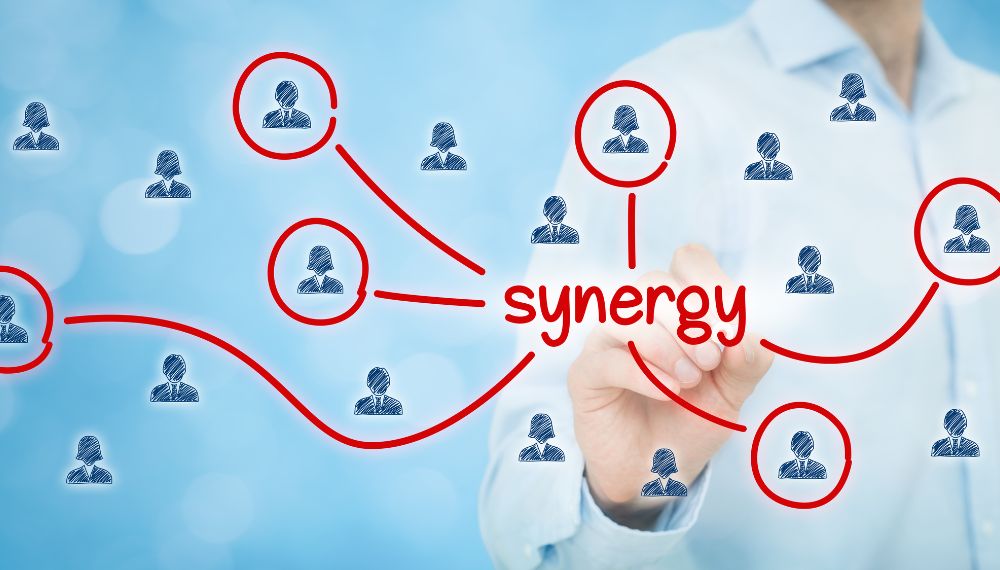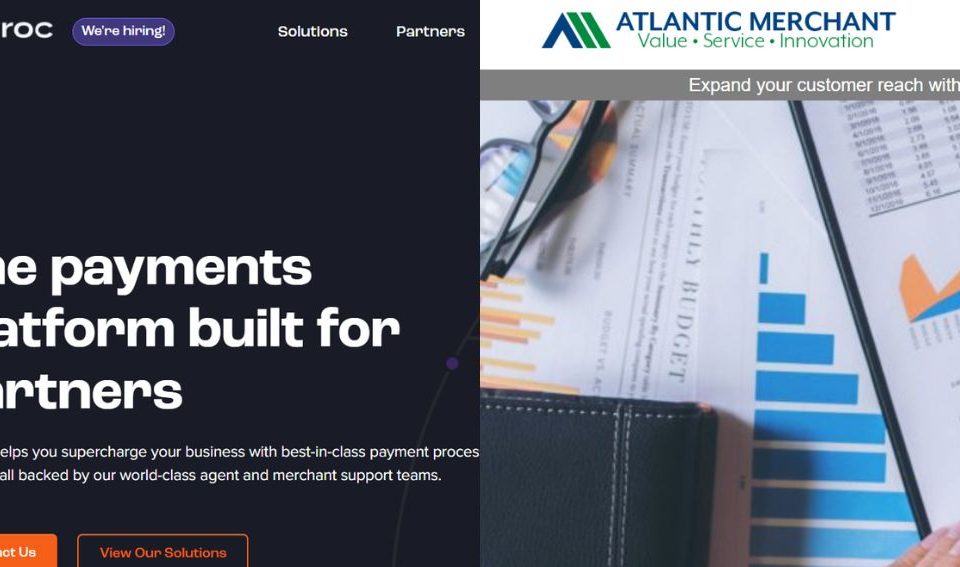What Are Synergies? Cost, Revenue, and Financial Synergies Defined

Merchant Lynx Acquisition of National Credit Card Processing Group: Key Details
October 10, 2023
Valuing a Business – Important Methods to Know
October 13, 2023When two or more companies join forces with the goal of increasing profits or reducing expenses, they create what’s known as synergy.
M&A companies place a high priority on unlocking the full financial potential associated with these processes. This underscores the significance of synergies and the need to maximize their benefits. Numerous studies have highlighted the formidable challenge that achieving initial synergy targets can be for corporations.
This article aims to equip companies with the necessary knowledge to navigate the complexities of synergies in mergers and acquisitions. It provides a thorough explanation of various types of synergies, how to calculate them, and includes real life examples showcasing companies that have achieved significant success through M&A transactions.
What Are Synergies And Their Objectives?

Synergy, a term commonly associated with M&A refers to the extra value generated by a transaction. When a transaction is said to have synergy, it means that the combined worth of the newly formed entity exceeds the sum of its individual parts.
The underlying objective of any transaction, be it entering a new market, introducing a new product line, or expanding through an acquisition, is to generate value. Synergies offer executives a means to efficiently attain this value. Not only do synergies provide this efficiency, but they also serve as an effective way to communicate the benefits of the deal to shareholders and investors. Synergies represent the potential financial advantages achieved when two companies merge. Numerous successful examples of synergies exist, such as Microsoft‘s collaboration with IBM.
The Role of Synergy in Business – A Look At The Positives And Negatives

In the business world teamwork is highly valued as it forms the foundation for success. Collaborative efforts often lead to better outcomes than a single person’s ambitions. This approach offers benefits to enterprises, such as increased profits, cost reduction gaining an edge satisfying customers expanding market share and more. Additionally, it plays a role in the development of economies of scale.
The idea of synergy also extends to the feedback system where businesses actively seek input from customers regarding their experiences with products and services. Customer reviews provide insights for companies by highlighting areas that require improvement and enabling them to enhance their performance.
When it comes to M&A synergy becomes a key driver behind business prosperity and market dominance. It allows companies or organizations involved in M&A to generate more revenue together than they could individually. Moreover, it facilitates the elimination of processes by streamlining the operations, resulting in significant cost savings.
Positives
Synergy can manifest in both positive and negative forms. When a group of individuals or companies collaborates constructively toward a common goal, the outcome surpasses what they could achieve independently. This form of positive synergy arises when individuals pool their talents to generate innovative ideas or when businesses combine various products or markets. In essence, it leads to improved operational efficiency, fresh opportunities, and optimal resource utilization.
Negatives
Conversely, when group members starting to have disagreements or allow personal issues to impede collaboration, the collective effort has minimal or even negative returns. Negative synergy suggests that combined efforts are less valuable than those undertaken individually. Businesses may encounter this challenge due to leadership structures and corporate cultures, resulting in reduced production, diminished quality, and underutilized resources. Other adverse consequences may include downsizing and divestiture.
Remember a true synergy goes beyond mere collaboration or mergers; it necessitates collective effort and constructive thinking to reach the full potential.
Different Types of Synergies in M&A

Calculating synergies often involves multiplying NPV (or the worth of the new firm), by the P (premium). In the M&A setup, three primary types of synergies are often emphasized – cost synergies, financial synergies and revenue synergies. Here is look at each point:
1. Cost Synergies
Cost synergies in M&A revolve around the potential for cost reduction when two distinct companies come together. The strategies employed to realize these cost synergies include:
- Workforce Optimization: Achieved through staff reductions, the elimination of redundant positions, the optimization of organizational structures, and reductions in professional services expenses.
- Supply Chain Optimization: By consolidating suppliers, enhancing logistics, reducing transportation costs, and improving inventory management, combined companies can optimize their supply chains.
- Facilities Consolidation: Cost synergies in M&A can be realized by eliminating redundant facilities and consolidating offices, as well as other capital assets like factories or warehouses.
- IT Systems Integration: Integrating information technology systems can lead to cost savings by eliminating duplicate software licenses, streamlining hardware infrastructure, and reducing IT support expenses.
Example of Cost Synergy: The 1998 merger of Exxon and Mobil, which resulted in the creation of the world’s largest oil company by market capitalization, produced substantial cost savings.
Exxon and Mobil, both prominent U.S. oil companies, held numerous overlapping assets that could be divested, including refineries and 2,400 service stations. Furthermore, this consolidation led to the reduction of the workforce by a total of 16,000 employees, contributing to cost synergies exceeding $5 billion for the company.
2. Revenue Synergies
Revenue synergies stem from the belief that when two companies join forces, their combined sales can exceed the sum of their individual sales.
It’s worth noting, however, that research indicates that capturing revenue synergies typically requires a few years longer than realizing cost synergies. McKinsey & Company has highlighted challenges in this area, such as defining appropriate targets and effectively implementing new workflows and sales strategies across all functions, which can make capturing revenue synergies more complex.
There are various examples of revenue synergies in M&A, with some traditional sources being:
- Cross-selling
- Decreased Competition
- Opening out to new markets
Example of Revenue Synergy: The acquisition of Instagram by Facebook. At the time of acquisition, Instagram had reported zero revenue. Nevertheless, Facebook’s leadership had the confidence that bringing these two social platforms together would create remarkable revenue prospects or synergies.
The integration of some of Instagram’s features into Facebook led to increased user engagement, making Facebook more appealing to advertisers and subsequently boosting its revenues.
3. Financial Synergies
Financial synergy arises when small businesses seek loans for expansion, but the burden of repayment can strain their financial health. In response, they may opt to join forces with a medium sized firm, becoming a part of it instead of borrowing a substantial sum from lenders. In essence, this strategy yields greater value to merged companies in terms of managing debt, optimizing tax implications, enhancing revenue, reducing capital costs, and streamlining cash flow when compared to their individual performances.
Example of Revenue Synergy: A notable instance of financial synergies in action was the proposed $160 billion acquisition of Allergan by Pfizer.
Allergan, a pharmaceutical company headquartered in Ireland, enjoyed the benefit of low corporate tax rates, which Pfizer sought to leverage. This merger would have translated into substantial annual tax savings for Pfizer, until the U.S. government intervened, ultimately prohibiting the deal on these grounds. Typically, financial and valuation analysts collaborate to identify potential financial synergies in such deals.
Maximizing Synergy Realization in Your Deal

Achieving synergy realization is crucial because no one wants a deal that merely appears promising on paper. The failure to capture predicted synergies is a significant factor contributing to deal failures. To ensure that your deal’s synergy potential is fully realized, here are some key steps to consider:
- Keep your overarching objective at the forefront throughout the entire process. This ensures that all efforts are aligned with the desired outcomes.
- Identify and prioritize the value drivers that are relatively easier to capitalize on. These can serve as quick wins and contribute to the overall success of the deal.
- Carefully plan and execute the integration process. A thoughtful integration strategy is essential for a smooth transition and synergy realization.
- Recognize the importance of retaining key talent from the acquired companies. The expertise and knowledge of these individuals can be invaluable during the integration phase.
- Do not underestimate the significance of organizational culture. Ensure that cultural alignment is addressed, as it can impact the success of integration efforts.
- Implement a robust tracking system to monitor the progress of synergy realization. Regularly assess how well you are meeting your synergy targets.
- Analyze your combined customer base to identify potential cross selling opportunities and areas for growth.
Synergies Beyond M&A

It’s important to recognize that the pursuit of synergies extends beyond just M&A. In fact, looking for synergies within a company’s existing operations and partnerships can be a good way of creating value. For instance, collaborating and sharing resources with a trusted, non-competing partner is one avenue to explore.
Various types of synergies that commonly occur outside of M&A encompass:
- Modular Synergies: Pooling resources effectively is a strategy where two non-competing companies join forces to generate value, akin to the concept underpinning M&A—combining resources. This is often referred to as modular synergies, involving companies bundling packages of products or services to derive greater value from their combinations.
- Sequential Synergies: Sequential synergies pertain to the value generated along a company’s value chain. While, in many instances, this value is realized through the acquisition of a firm either upstream or downstream in the value chain (as seen in vertical acquisitions), it can also be achieved by aligning with partners that naturally complement your own operations.
Conclusion
Irrespective of the specific synergy goals in a M&A deal, it is imperative to keep them in mind at every stage of the process.
Identifying synergies might seem straightforward, but turning them into tangible results can prove challenging. Hence, it’s crucial to recognize that even after the deal has closed, there remains a substantial amount of work ahead to fully realize the anticipated benefits.
Frequently Asked Questions
Q: What does synergy mean?
Synergy is a process where individuals or companies combine their resources and efforts to achieve increased productivity, effectiveness, and performance compared to what they could achieve independently. M&A are prime examples of this, where the new entity can provide greater value than the two separate entities. Bringing together people, technology, and resources in a business can result in higher revenue and reduced costs.
Q: Is synergy always positive?
Synergy can have both positive and negative aspects. For instance, when a group of individuals or businesses collaborates to attain a common goal, the result is typically positive, yielding better outcomes than individual efforts. Conversely, negative synergy arises when group members experience disagreements or clashes of ego, leading to efforts being less productive than individual ambitions.
Q: What Is Workplace Synergy?
Workplace synergy refers to employees working together to enhance the overall productivity of the workplace. This includes aspects like providing feedback, setting clear goals, implementing performance-based compensation, and fostering teamwork to address challenges that can have a more significant impact when tackled collectively.




